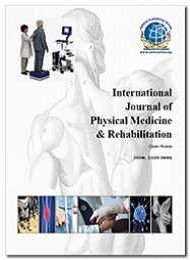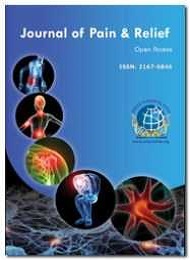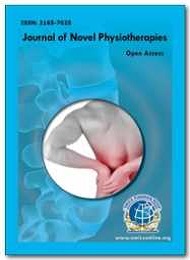Theme: Innovations in Pain Relief: Shaping the Future of Patient-Centered Care
Pain Management 2025
Join us at the "7th International Conference and Exhibition on Pain Management" hosted by Conference Series, where researchers, professors, scientific communities, delegates, students, business professionals, and executives are cordially invited. The event will take place in Rome, Italy, from December 04-05, 2023. This conference will provide a platform for engagement, empowerment, evolution, and exploration of knowledge for anesthesia, intensive care, pain medicine, palliative care, and related professionals. With a thematic focus on "Explore innovative approaches to pain relief and regain control of your life," our goal is to bring together esteemed experts and scholars in anesthesia, pain medicine, and palliative care to foster the advancement of core knowledge and major breakthroughs in these rapidly emerging fields.
The Pain Management Conference goes beyond serving as a platform for anesthesia specialists to enhance their knowledge of cutting-edge techniques in the field. It presents a comprehensive program that includes a symposium centered on pain management. This symposium equips delegates with valuable insights into the real-world challenges of enhancing healthcare and delivering effective pain management to patients.
Target Audience:
- Chief/Head/Consultant Anaesthesiologists/ Anaesthetists
- Anaesthesia Technicians/ Nurses (Anaesthetists)
- Critical Care/ICU Nurses
- Pain medicine consultants/ specialists and intensivists
- Pharmacists Intensive care physicians
- Institutes-Medical Schools Students
- Manufacturing Medical Devices Companies
- Business Entrepreneurs
Reasons to Attend:
Pain Management 2025 offers a global platform to showcase research findings, discuss diagnosis, prevention, and management strategies, and facilitate the exchange of ideas. By participating, you will contribute to the dissemination of knowledge in Anesthesia and Pain Medicine, benefiting both the academic community and the business sector.
The conference promises an engaging and informative program, featuring plenary lectures, symposia, workshops, poster presentations, and a variety of programs designed to cater to participants from across the globe. Join us for an exciting opportunity to enhance your understanding of pain management and stay abreast of the latest developments in the field
Track 1: Interventional Pain Management
Interventional pain treatment includes specialist procedures carried out in pain management clinics or centers, such as spinal cord stimulation and injections, to successfully treat and manage pain. The Pain treatment Centers provide advanced interventional pain treatment therapies given by a team of professional anaesthesiologists with specialized training in these techniques. Interventional pain treatment employs a multidisciplinary approach to provide comfort to patients suffering from a variety of illnesses such as persistent headaches, mouth or face pain, low back pain, muscular and/or bone pain, and neck pain.
Societies: Alliance of State Pain Initiatives | American Academy of Hospice and Palliative Medicine | American Academy of Orofacial Pain | American Academy of Pain Management | American Academy of Pain Medicine
Track 2: Anesthesia and Critical Care
Anesthesia and Critical Care are crucial medical disciplines that play a vital role in ensuring the safety and comfort of patients during surgical procedures and in critical care environments. Anesthesia encompasses the administration of medications to induce a controlled state of unconsciousness, alleviate back pain, and maintain physiological stability throughout surgery. Anesthesiologists are highly skilled professionals who diligently monitor patients' vital signs, administer appropriate anesthesia, and effectively address any potential complications that may arise. Critical care primarily focuses on providing specialized medical care to individuals who are critically ill, often in intensive care units (ICUs). Critical care specialists oversee the monitoring and treatment of patients with life-threatening conditions, ensuring their stability and managing intricate medical interventions.
Societies: Alliance of State Pain Initiatives | American Academy of Hospice and Palliative Medicine | American Academy of Orofacial Pain | American Academy of Pain Management | American Academy of Pain Medicine | American Board of Pain Medicine
Track 3: Pain Medicine
Pain medicine is a specialized field of medicine that focuses on the diagnosis, management, and treatment of pain. Pain, whether it is acute or chronic, can have a significant impact on a person's quality of life, and the goal of pain medicine is to alleviate suffering and enhance overall well-being. Pain medicine physicians adopt a comprehensive approach, combining a range of techniques and modalities to effectively address pain. These may include the use of medications, interventional procedures, physical therapy, rehabilitation, psychological therapies, and complementary or alternative therapies. Pain medicine physicians work closely with patients to understand the underlying causes of their pain, develop personalized treatment plans, and closely monitor progress. Through compassionate care and evidence-based practices, pain medicine specialists strive to reduce pain, improve functionality, and enhance the overall quality of life for individuals dealing with pain.
Societies:American Society of Regional Anesthesia and Pain Medicine | Association of Anaesthestists of Great Britain and Ireland | Centre for Pediatric Pain Research | Chronic Pain Association of Canada | Pain Concern | Vulvar Pain Foundation | Pain Relief Foundation
Track 4: Pain Management and Rehabilitation
Acute pain, which lasts for a short period, often indicates injury or disease, while chronic pain is typically associated with conditions such as headaches, lower back pain, or fibromyalgia. Fibromyalgia is characterized by pain in the back, hands, neck, shoulders, or pelvis, accompanied by fatigue or sleep disturbances. Rehabilitation programs are designed to provide individualized assessments, treatments, and follow-up plans for patients. These programs emphasize reducing medication dependency, implementing psychological treatments for conditions like depression and anxiety, offering family counseling, enhancing socialization skills, and providing educational or vocational counseling. Painful conditions such as migraines, tension headaches, and sinus headaches are also addressed. Migraine symptoms include a pounding headache, nausea, vomiting, and sensitivity to light. Treatment options include anti-nausea drugs, abortive medications, and preventive measures. Headache remedies often involve the use of pain relievers.
Societies:American Board of Pain Medicine | American Chronic Pain Association | American Society of Anesthesiologists | American Society of PeriAnesthesia Nurses | American Society of Regional Anesthesia and Pain Medicine
Track 5: Advances in Internal Medicine
The field of pain management has undergone a remarkable transformation with significant contributions from advances in Internal Medicine. These advancements have revolutionized the approach to diagnosing, understanding, and treating a wide range of pain conditions. One notable breakthrough is the development of advanced imaging techniques like magnetic resonance imaging (MRI) and functional MRI (fMRI), which enable enhanced visualization and evaluation of pain-related abnormalities within the central nervous system. Internal medicine specialists, collaborating with multidisciplinary teams, play a pivotal role in implementing these innovations, providing patients with personalized and comprehensive care tailored to their specific pain conditions. The integration of these advances in internal medicine has significantly advanced our understanding, diagnosis, and treatment of pain, instilling fresh hope and relief for individuals grappling with both chronic and acute pain
Societies: Association of Anaesthestists of Great Britain and Ireland | Centre for Pediatric Pain Research | Chronic Pain Association of Canada | Pain Concern | Vulvar Pain Foundation | Pain Relief Foundation
Track 6: NSAIDs and Analgesics
Nonsteroidal anti-inflammatory drugs (NSAIDs) are widely recognized as one of the most prevalent forms of pain relief medication worldwide. According to the American Gastroenterological Association, over 30 million Americans rely on NSAIDs daily to alleviate headaches, sprains, arthritis symptoms, and everyday discomforts. These medications not only provide pain relief but also possess fever-reducing and anti-inflammatory properties. NSAIDs function at a chemical level by inhibiting specific enzymes known as Cox-1 and Cox-2 enzymes, which are responsible for producing prostaglandins. By impeding these enzymes, NSAIDs effectively reduce the production of prostaglandins, leading to diminished swelling and decreased pain. Various types of NSAIDs are available over the counter, including aspirin (Bayer, Bufferin, Excedrin), ibuprofen (Advil, Motrin IB), and naproxen (Aleve).
Societies: American Society of Anesthesiologists | American Society of PeriAnesthesia Nurses | American Society of Regional Anesthesia and Pain Medicine | Chronic Pain Association of Canada | Pain Concern | Vulvar Pain Foundation | Pain Relief Foundation
Track 7: Classification of pain relief analgesics
Pain relief analgesics can be categorized based on their mechanism of action and potency, allowing for a comprehensive understanding of their diverse applications. Non-opioid analgesics, which include nonsteroidal anti-inflammatory drugs (NSAIDs) and acetaminophen, are frequently utilized for managing mild to moderate pain. By inhibiting the production of prostaglandins, which contribute to inflammation and pain, these medications effectively alleviate discomfort. On the other hand, opioid analgesics such as morphine, oxycodone, and codeine are potent pain relievers that bind to opioid receptors in the central nervous system, delivering robust pain relief. Generally reserved for moderate to severe pain, opioid analgesics come with potential side effects and the risk of dependence.
Societies:American Society of PeriAnesthesia Nurses | American Society of Regional Anesthesia and Pain Medicine | Association of Anaesthestists of Great Britain and Ireland | Centre for Pediatric Pain Research | Chronic Pain Association of Canada | Pain Concern | Vulvar Pain Foundation | Pain Relief Foundation
Track 8: Pharmacological Approaches for Pain
Analgesic drugs, commonly known as pain relievers, encompass a range of medications including nonsteroidal anti-inflammatory drugs (NSAIDs), acetaminophen, narcotics, antidepressants, anticonvulsants, and others. NSAIDs and acetaminophen are available both over-the-counter and by prescription, often serving as the initial pharmacological treatment for pain. These drugs can also be used as adjuncts to other prescribed therapies. NSAIDs, such as aspirin, ibuprofen (Motrin, Advil, Nuprin), naproxen sodium, and ketoprofen (Orudis KT), are primarily used to alleviate pain caused by inflammation. They achieve this by blocking the production of pain-enhancing neurotransmitters, like prostaglandins. Acetaminophen, while effective in pain relief, has limited anti-inflammatory
Societies: Association of Anaesthestists of Great Britain and Ireland | Centre for Pediatric Pain Research | Chronic Pain Association of Canada | Pain Concern | Vulvar Pain Foundation | Pain Relief Foundation
Track 9: Non-Pharmacological Approaches for Pain
Non-pharmacological approaches play a significant role in achieving effective pain relief and are often well-received by patients. While certain measures, such as the use of hot or cold packs, are occasionally recommended, their efficacy remains insufficiently researched. Complementary therapies for pain management are frequently sought out by patients and necessitate evaluation to determine their potential role in palliative care settings.
Societies: American Society of PeriAnesthesia Nurses | American Society of Regional Anesthesia and Pain Medicine | Association of Anaesthestists of Great Britain and Ireland | Centre for Pediatric Pain Research | Chronic Pain Association of Canada | Pain Concern | Vulvar Pain Foundation | Pain Relief Foundation
Track 10: Regenerative Medicine
Regenerative medicine is an ever-evolving field dedicated to leveraging the innate healing mechanisms of the body to repair and rejuvenate damaged tissues and organs. This interdisciplinary approach encompasses a range of strategies, including stem cell therapy, tissue engineering, gene therapy, and biomaterial utilization, all aimed at fostering tissue regeneration and functional recovery. Stem cells, renowned for their remarkable ability to differentiate into diverse cell types, play a pivotal role in regenerative medicine.
Societies: American Society of PeriAnesthesia Nurses | American Society of Regional Anesthesia and Pain Medicine | Association of Anaesthestists of Great Britain and Ireland | Centre for Pediatric Pain Research | Chronic Pain Association of Canada | Pain Concern | Vulvar Pain Foundation | Pain Relief Foundation
The growth of the global pain management drugs and devices market is majorly due to the well-established business of painkiller medications as the first line of treatment. In recent years, the increasing reliance on their prolonged use and a greater understanding of their side-effects have led to the growing use of device-based pain management therapies. Presently, at the country level, economic factors play a significant role in the management of financial implications for hospitals. Postsurgical pain is one of the primary focuses of hospitals, where the cost of monitoring and the treatment of adverse effects creates the major demand for pain management drugs and devices.
The current market is gradually adopting more non-opioid medications to suppress the addiction toward opioids and certain well-established painkillers in the market. There are several non-opioid drugs with mechanisms of action that are currently in early and late-stage development. The federal authorities in multiple countries are shifting to alternative approaches, and thus, fast-tracking those drugs to market approval. The shift is expected to be gradual, and thus pain management has very attractive growth prospects between 2019 and 2024.
Scope of the Report
This report includes an in-depth study of the global pain management market (henceforth, referred to as the ‘market studied’). Pain is defined as an unpleasant sensation in the body, owing to ongoing or impending tissue damage. Pain management is one of the most frequently dealt-with issues by clinicians for any disease. Pharmacological therapy is the first line of therapy, followed by treatment via devices in severe pain management cases.
Key Market Trends
Cancer Pain Segment is expected to Exhibit the Fastest Growth Rate over the Forecast Period
Pain during cancer occurs the most when a tumor presses on to the bones, nerves, or organs. The pain may vary according to the affected location. Chemotherapy, Radiotherapy, and Surgery can also cause pain. Certain painful conditions are likely to occur more in patients with a suppressed immune system, which is often a result of these therapies.
Pain caused by cancer can be treated. About nine out of ten cancer patients suffering from pain find relief by using a combination of medications. Many medicines are used for pain management in cancer patients. Some drugs are general pain relievers, while other target specific types of pain may require a prescription. The increasing incidences of various forms of cancer are likely to directly lead to an increase in cancer pain cases, the treatment of which, both through drugs and devices, is expected to contribute to the market growth.
North America Captured the Largest Market Share and is Expected to Retain its Dominance
North America holds the largest share in the global pain management market, with the United States being the largest contributor to its revenue. According to the data published by the Centers for Disease Control and Prevention (CDC), in 2016, approximately 20.4% of adults in the United States (which is about 50.0 million) were suffering from chronic pain and 8.0% of adults in the country (which is about 19.6 million) were suffering from high-impact chronic pain, with higher prevalence associated with advancing age.
Conference Highlights
To share your views and research, please click here to register for the Conference.
To Collaborate Scientific Professionals around the World
| Conference Date | May 19-20, 2025 | ||
| Sponsors & Exhibitors |
|
||
| Speaker Opportunity Closed | |||
| Poster Opportunity Closed | Click Here to View | ||
Useful Links
Special Issues
All accepted abstracts will be published in respective Our International Journals.
- International Journal of Physical Medicine & Rehabilitation
- Journal of Novel Physiotherapies
- Journal of Pain & Relief
Abstracts will be provided with Digital Object Identifier by






